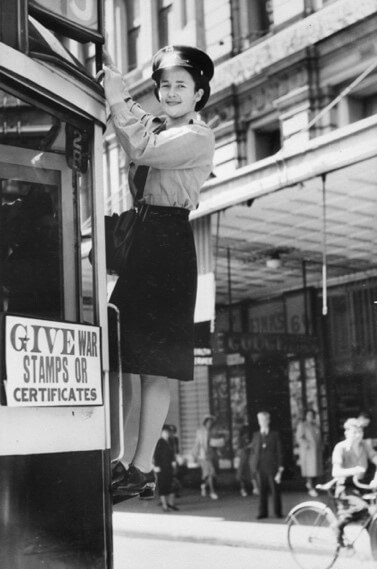Some of the most public roles assumed by women during the war were those on the trams and trains. The first tram ‘conductresses’ were appointed in September 1941 and their numbers grew rapidly, until by 1943 there were 1,000 women employed on Melbourne’s trams. Popularly known as the ‘connies’ they won acceptance swiftly, after some initial prejudice. However the Tramways Union ensured that women were not trained to drive the trams. Unlike the women in many ‘male’ jobs, the ‘connies’ were paid the full male rate from the beginning. Many of the first appointees were the wives of tramways men serving overseas. Later preference was given to the wives of men on active service more generally. Perhaps the Tramways assumed that these women would be more amenable to making way for the men on their return.
The ‘connies’ were only ever employed on a temporary basis, with the expectation that they would be replaced after the war. The first such retrenchments took place in February 1946, with almost all replaced by 1947. It was not until 1975 that women were first allowed to train as tram drivers.
‘Connies’ were popular subjects for photography during the war. Although paid the same rate as men, they had to use their own ration tickets to supply their uniforms.
Victorian Railways employed female porters and ticket collectors from June 1942, although many thought at first that the work would be too heavy for women. Initially the porters were required to wear grey uniforms with skirts, but they soon found these unsuitable and asked for trousers.



